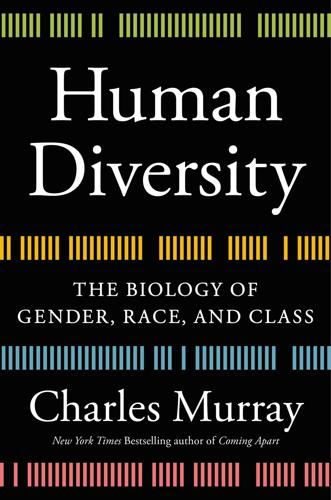
Human Diversity: The Biology of Gender, Race, and Class
by
Charles Murray
Published 28 Jan 2020
For a full discussion of this issue, see Pettersson, Mendle, Turkheimer et al. (2014). 7. Other personality models include HEXACO, which adds an honesty-humility factor to the Big Five, and a model focused on three problematic aspects of the personality: narcissism, Machiavellianism, and sadism. It’s called variously the Dark Triad or the Dark Tetrad model. For a review of the literature, see Furnham, Richards, and Paulhus (2013). 8. Among the 30 FFM facets (the detailed characteristics that make up the five factors), here are the ones that showed absolute effect sizes of less than 0.20 in both the Costa and Kajonius studies: experiences anger or bitterness, assertive or forceful in expression, open to the inner world of imagination, open to new experiences in life, open to reexamining one’s own values, trust in others’ sincerity or intentions, values orderliness, believes in fulfilling moral obligations, uses self-discipline in fulfilling tasks, and thinks things through before acting.
…
Whatever the explanation turns out to be, the evidence about personality profiles around the world needs to be taken on board by orthodox academics. In 2016, David Schmitt and colleagues returned to the body of evidence that had accumulated since the turn of the twenty-first century, summarizing it this way: Psychological sex differences—in Big Five traits, Dark Triad traits, self-esteem, subjective well-being, depression, and values—are demonstrably the largest in cultures with the lowest levels of bifurcated gender role socialization or sociopolitical patriarchy. Ultimately, the view that men and women start from a blank slate simply does not jibe with the current findings, and scholars who continue to assert gender invariably starts from a psychological blank slate should find these recurring cross-cultural patterns challenging to their foundational assumptions.41 [Emphasis in the original.]
…
Advances in Methods and Practices in Psychological Science. Advance online publication. Furnham, Adrian, and Helen Cheng. 2017. “Socio-demographic Indicators, Intelligence, and Locus of Control as Predictors of Adult Financial Well-Being.” Journal of Intelligence 5 (2). Furnham, Adrian, Steven C. Richards, and Delroy L. Paulhus. 2013. “The Dark Triad of Personality: A 10 Year Review.” Social and Personality Psychology Compass 7: 199–216. Galton, Francis. 1869. Hereditary Genius: An Inquiry into Its Laws and Consequences. 1892 ed. London: Macmillan. Gamble, Clive, John Gowlett, and Robin Dunbar. 2014. Thinking Big: How the Evolution of Social Life Shaped the Human Mind.

Duped: Double Lives, False Identities, and the Con Man I Almost Married
by
Abby Ellin
Published 15 Jan 2019
I don’t think anybody else understands him either.”11 WE LIKE TO think that extreme subterfuge, or the ability to maintain a large-scale deception, is only carried out by those with psychiatric labels—narcissism, Machiavellianism, and psychopathy, part of what Delroy L. Paulhus, a psychology professor at the University of British Columbia, called the “Dark Tetrad.” (Sadism was added later.)12 Which is to say, people fundamentally different from you and me. We don’t want to think we are like them in any way. In the early 1800s, psychologists began noticing that some of their patients who appeared normal didn’t possess the same ethics as other people. They called this “moral depravity” or “moral insanity.”13 “Psychopath” was the preferred term until the 1930s, when it became “sociopath” to connote just how dangerous they were to society.
…
See Business Intelligence Advisors bias, 144, 148 the Bible, 39, 86 bin Laden, Osama, 1, 4–5, 118 Blair, Jayson, 150 Blink (Gladwell), 31 Blood Will Out (Kirn), 150 Bond, Charles F., 195 Bond, James, 37–39 Bouteuil, Astrid, 66 Bowers, Kathryn, 82 brain amygdala, 84, 125–126, 213 cognition areas and modularity, 105–108 cognitive dissonance and, 147–148 lies and, 84, 193 love and, 145–146 PTSD and, 123–126, 130, 184 trauma and, 213 Truthful Brain, 202 Brain Injury, 67 broapp.net, 41 Bronson, Po, 81 Brown, Jerry, 133 Brown, Sandra, 213, 214–215 Bruckheimer, Jerry, 19 Buddhism, 107 Bulger, Whitey, 40 Bundy, Ted, 203 Burstyn, Ellen, 64–65 Business Intelligence Advisors (BIA), 189–190 career, fraudulent credentials with, 41 CareerExcuse.com, 41 Carnal Abuse by Deceit: Why Lying to Get Laid Is a Crime (Short, J.), 131–132 Carver, Raymond, 35 Celebrity Sex Pass, 65 CEOs, psychopathy and, 74 chaos, truth and, 98–99 character disturbance, 78 supertraits, 213–215 trust and, 146, 160 Charlie Brown (fictional character), 148–149, 216 Chernow, Ron, 210 children, 101, 148 brains of, 84 double lives influencing, 129 as identity fraud victims, 172 lies and, 80–81 trust and, 146–147 Church, Angelica Schuyler, 210 CIA, 5, 24, 29, 37, 101 as paid liars, 22 spies, 109, 151 Cleckley, Hervey, 74 the Cliché, 137–143 Clinton, Bill, 97 Clinton, Hillary, 21, 87, 105 clusters of actions, 192 coercive control, 187–188 cognition areas, of brain, 105–108 cognitive dissonance, 147–148 coincidence of opposites (coniunctio oppositorum), 86 Collins, Diane, 178–184, 217 collusion, complicity and, 155–158 the Commander, 139, 155, 210–213 double life of, 1–10, 15–30, 92–93, 97–98, 115–121 exposed, 120–121, 218–219 investigative research into, 24–25 reasons for lies, 87–88 supertraits, 214 commission, lies of, 160 communication, nonverbal, 191–192 compartmentalization denial and, 149–150 double lives and, 96–97, 142 lies and, 99–100 relationships and, 110–113 self-integration, 103–104 undercover work and, 102 complicity, collusion and, 155–158 compulsive liars, 24, 27, 74–75 The Confidence Game (Konnikova), 143 coniunctio oppositorum (coincidence of opposites), 86 conscientiousness, 214, 215 ConsentAwareness.net, 130 control coercive, 187–188 question, 199 Converus, 202–203 corporations CEOs and psychopathy, 74 hypocrisy and, 106 with lies, 196 women and, 176–177 cowardice, fear and, 62 crime, 131–132, 135 coercive control as, 188 men and, 176 women and, 176–177 Crundwell, Rita, 171–172, 177 Cyr, Joseph, 72 Daniels, Stormy, 198 Dante Alighieri, 42, 105 “Dark Tetrad,” 73 Darville, Helen, 67–68 Darwin, Anne, 99–100 Darwin, John, 99–100 David, Larry, 139, 142 Dear Evan Hansen (play), 40 deaths, fake, 99–100 debt, in marriage, 31 Demara, Ferdinand Waldo, Jr., 71–73, 98 Demidenko, Helena, 67 Democratic National Convention (2008), 42 denial compartmentalization and, 149–150 of truth, 13, 128 DePaulo, Bella M., 59, 172–173, 195 depression, 124, 157 Derailed (Stapel), 34–35 Desai, Sonia, 123 detection, of lies language and, 193–195 methods for, 197, 202–203 polygraph, 198–202, 206 with unconscious mind, 204–205 Devine, Jack, 151 Diagnostic and Statistical Manual of Mental Disorders (DSM), 74, 124 Diana (Princess), 6 DiCaprio, Leonardo, 35 Dickens, Charles, 86 Dirks, Kurt T., 149 disorders attention deficit, 60 DSM, 74, 124 personality, 73, 74, 79, 123–124 PTSD, 123–126, 130, 184 disorientation, gaslighting and, 25, 119 Dolezal, Rachel, 68 domestic violence, 129, 130 Domingo, Plácido, 16 doppelgänger (double walker), 86 Dostoevsky, Fyodor, 86 double lives, 67–69 of Alvarez, 75–78, 80, 89 of the Commander, 1–10, 15–30, 92–93, 97–98, 115–121 compartmentalization and, 96–97, 142 of Demara, 71–73 escapism and, 63–64 families and, 108, 122–123, 126–130, 175–176 in marriage, 65–66, 126–130, 137–143, 163–171, 184–185, 209–210 double walker (doppelgänger), 86 The Double (Dostoevsky), 86 The Double Life of Charles A.

The Twittering Machine
by
Richard Seymour
Published 20 Aug 2019
They are experts on vulnerability. Yet members of the trolling subculture are for the most part not unusual. Academics studying trolling as a form of ‘online deviancy’ have engaged in a sophisticated form of the moral panic that pervades the press. Trolls are monstered, allegedly defined by a ‘Dark Tetrad’ of personality traits such as Machiavellianism, narcissism, psychopathy and sadism. These stories, dull and predicate-begging, merely redescribe trolling behaviour in morally excitable language without giving any account of it. Whitney Phillips, author of This Is Why We Can’t Have Nice Things, found that, far from being deviant, trolls tended to be quite ordinary young men – with the emphasis on young men.6 Their ‘gleeful sociopathy’, as the trolling bible Encyclopedia Dramatica calls it, was enabled by forms of emotional detachment only available in online anonymity.
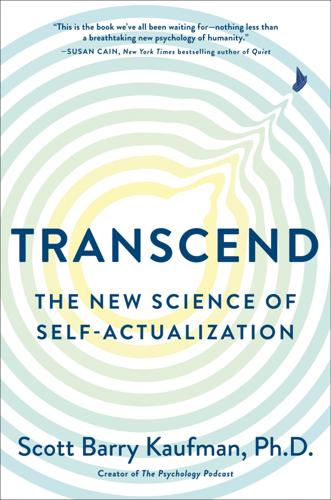
Transcend: The New Science of Self-Actualization
by
Scott Barry Kaufman
Published 6 Apr 2020
Yalom, Existential psychotherapy, p. 377. 14. This section is adapted from Kaufman, S. B. (2019). The light triad vs. dark triad of personality. Scientific American Blogs. Retrieved from https://blogs.scientificamerican.com/beautiful-minds/the-light-triad-vs-dark-triad-of-personality. 15. Paulhus, D. L., & Williams, K. M. (2002). The dark triad of personality: Narcissism, Machiavellianism, and psychopathy. Journal of Research in Personality, 36(6), 556–563. 16. Dinić, B., & Wertag, A. (2018). Effects of dark triad and HEXACO traits on reactive/proactive aggression: Exploring the gender differences. Personality and Individual Differences, 123, 44–49; Jonason, P.
…
My quest to scientifically study B-love, however, started out with its opposite, resting on the assumption that we can best define the light by peering as deeply as possible into the darkness. THE LIGHT VS. DARK TRIAD In spite of everything, I still believe that people are truly good at heart. —Anne Frank, The Diary of a Young Girl (1947) What’s one less person on the face of the earth, anyway? —Ted Bundy, quoted in Elliott Leyton, Hunting Humans (2003) Why are dark triad people so seductive? I asked my colleague David Yaden in his office.14 Immediately his ears pricked up, and he asked me to send him papers on the dark triad—thus proving my point. They get all the research attention! I complained. Is there anything interesting at all about people who aren’t assholes?
…
In a quick email response, David simply wrote back, “Light triad?” Now my ears pricked up. Is there such a thing? Has it been studied? The dark triad has already been well studied. First discovered by Delroy Paulhus and Kevin Williams in 2002, the dark triad of personality consists of grandiose narcissism (entitled self-importance), Machiavellianism (strategic exploitation and deceit), and psychopathy (callousness, cynicism, and impulsivity).15 Since that initial paper, hundreds of studies have been conducted linking the dark triad characteristics to a wide range of socially aversive outcomes, including higher levels of aggression and violence; instrumental sex; extremely strong motives for power, money, and social status; and even a higher likelihood of committing all seven “deadly sins.”16 While other “dark traits” have been added to the dark triad in recent years (e.g., sadism, spitefulness), and each of these dark traits have multiple dimensions and unique properties (for instance, see Chapter 3 for a deep dive into narcissism), there does appear to be a “dark core” that is in common among all of them.17 Research suggests that the dark core consists of a mix of callousness and dishonesty/manipulation.18 This particular combination of characteristics seems to be key.
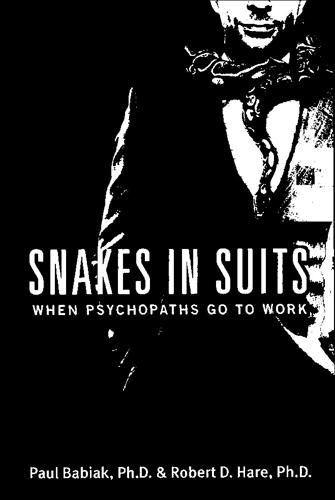
Snakes in Suits: When Psychopaths Go to Work
by
Dr. Paul Babiak
and
Dr. Robert Hare
Published 7 May 2007
Also, their emotional poverty does not support allegiance or loyalty to the company or their coworkers, although they can speak the necessary words to indicate intense loyalty to the firm. Their personas might be compared to the enthusiasm of a kid in a candy store. The Dark Triad Among the personalities that present problems for society in general and for the corporate world in particular are narcissism, Machiavellianism, and psychopathy (including its less severe variant, subclinical psychopathy), sometimes referred to collectively as the dark triad. As described by researchers Nathanson, Paulhus, and Williams, "Those high in narcissism are characterized by grandiosity, entitlement, and a sense of superiority over others.. . .
…
In a series of studies, Paulhus and his colleagues have shown that of the members of the dark triad it is subclinical psychopathy that is most strongly related to a variety of socially deviant behaviors, including cheating, plagiarism, self-reports of misbehavior, bullying, and drug use. [In this case, subclinical psychopathy is measured by the Self-Report Psychopathy-III Scale (SRP-III; Paulhus, Hemphill & Hare, in press).] This is not surprising, given that psychopathy combines some of the features of narcissism and Machiavellianism with aggressive and antisocial tendencies. We might refer to psychopathy as the mean side of the dark triad. SUPPORTING ROLES—THE PAWNS AND PATRONS If psychopaths are the writers, directors, and stars in the psychopathic fiction, then it is important that those around them be cast in supportive roles.
…
The B-Scan 360: Research Version. Toronto, Ontario: Multi-Health Systems, 2005. 118 “The Psychopath in the Next Cubicle” Adams, S. Dilbert. Andrews McMeel Publishing, 2002. 124 “The Dark Triad” Nathanson, C., Paulhus, D. L., & Williams, K. M. Predictors of a behavioral measure of scholastic cheating: Personality and competence but not demographics. Contemporary Educational Psychology, 31(1), 97-122, 2006. 124 “The Dark Triad” Paulhus, D., Hemphill, J., & Hare, R. D. (in press). The SRP-III. Toronto, Ontario: Multi-Health Systems. 135 “Corporate Fraud in the Boardroom” Skalak, S., Nestler, C., & Buss-mann, K.

Rethinking Narcissism: The Bad---And Surprising Good---About Feeling Special
by
Dr. Craig Malkin
Published 6 Jul 2015
They stop thinking that their partners are the best or most important people in the room because they need to claim that distinction for themselves. And they lose the capacity to see the world from any point of view other than their own. These are the true narcissists, and at their worst, they also display two other traits of a so-called “dark triad”: a complete lack of remorse and a penchant for manipulation. Surprisingly, too little narcissism can be harmful as well. Remember Echo? She’s the part of the myth we usually forget. She has no voice of her own. She’s self-abnegating, nearly invisible. The less people feel special, the more self-effacing they become until, at last, they have so little sense of self they feel worthless and impotent.
…
Creativity, OCD, Narcissism and the Big Five. Thinking Skills and Creativity, 2013, vol. 10, pp. 91–98. Goorin, L., and G. A. Bonanno. Would you buy a used car from a self-enhancer? Social benefits and illusions in trait self-enhancement. Self and Identity, 2009, vol. 8(2,3), pp. 162–75. Jakobwitz, S., and V. Egan. The dark triad and normal personality traits. Personality and Individual Differences, 2006, vol. 40(2), pp. 331–39. Konrath, S., B. P. Meier, and B. J. Bushman. Development and Validation of the Single Item Narcissism Scale (SINS). PLoS One, 2014, vol. 9(8), e103469. Le, B., N. L. Dove, C. R. Agnew, M. S. Korn, and A.
…
On environmental sources of child narcissism: Are parents really to blame. In Narcissism and Machiavellianism in Youth: Implications for the development of adaptive and maladaptive behavior, C. T. Barry, P. K. Kerig, K. K. Stellwagen, T. D. Barry, editors, pp. 125–43. American Psychological Association, 2011. Jakobwitz, S.. and V. Egan. The dark triad and normal personality traits. Personality and Individual Differences, 2006, vol. 40(2), pp. 331–39. Morf, C. C., and F. Rhodewalt. Expanding the dynamic self-regulatory processing model of narcissism: Research directions for the future. Psychological Inquiry, 2001, vol. 12(4), pp. 243–51. Morrison, A.
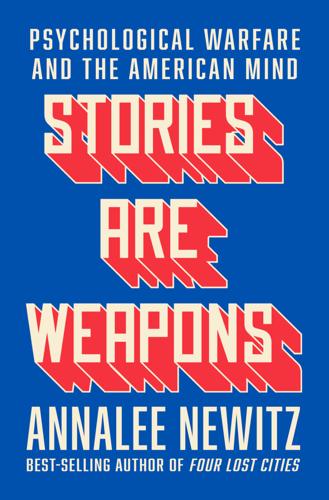
Stories Are Weapons: Psychological Warfare and the American Mind
by
Annalee Newitz
Published 3 Jun 2024
Knowing people’s likes and dislikes would make them ripe for manipulation, as long as the right political messages were crafted to trigger them. Bannon was interested in reaching people who exhibited what psychologists call the “dark triad” of antisocial personality traits: narcissism, Machiavellianism (manipulativeness), and psychopathy (lack of care for others). People who score high on dark triad tests tend to be authoritarians who are willing to break the law to get what they want.12 Using the tranche of ill-gotten Facebook data, Cambridge Analytica researchers trained an algorithm to predict who had the dark triad, based on their profiles. They targeted those people with ads, luring them to Facebook pages that the firm had set up to test out which messages worked best on these easily activated people.
…
They targeted those people with ads, luring them to Facebook pages that the firm had set up to test out which messages worked best on these easily activated people. In his book, Wylie claimed that some of those messages included “drain the swamp” and “make America great again,” which later became slogans of Trump’s 2016 presidential campaign. Once a group of people with dark triad personalities had converged on a message, Cambridge Analytica operatives would encourage them to gather in a local bar or coffee shop, where they could swap conspiracy theories and strengthen their ties. According to Wylie, Bannon believed that there were Democrats who were secretly racist, and all they needed was the proper nudge to be “deprogrammed” and brought over to the far right.
…
“Big Five Personality Test,” Open-Source Psychometrics Project, August 2, 2019. 10. Rosenberg, Matthew, and Gabriel J. X. Dance, “ ‘You Are the Product’: Targeted by Cambridge Analytica on Facebook,” New York Times, April 8, 2018. 11. Cadwalladr, “I Made Steve Bannon’s Psychological Warfare Tool.” 12. Jones, D. N., and D. L. Paulhus, “Introducing the Short Dark Triad (SD3): A Brief Measure of Dark Personality Traits,” Assessment 21, no. 1 (2014): 28–41. 13. All quotes in this paragraph come from Wylie’s book Mindf*ck. 14. Rosenberg, Confessore, and Cadwalladr, “How Trump Consultants Exploited.” 15. Wylie, Mindf*ck. 16. Wylie. 17. Habermas, Jürgen, Legitimation Crisis, trans.

The Wisdom of Psychopaths: What Saints, Spies, and Serial Killers Can Teach Us About Success
by
Kevin Dutton
Published 15 Oct 2012
Martinich and Brian Battiste (Peterborough, ON: Broadview Press, 2010). 4. The Wisdom of Psychopaths 1 Back in 2010, Jonason … See Peter K. Jonason, Norman P. Li, and Emily A. Teicher, “Who Is James Bond? The Dark Triad as an Agentic Social Style,” Individual Differences Research 8, no. 2 (2010): 111–20. 2 Jonason’s study saw two hundred college students … See P. K. Jonason, N. P. Li, Gregory W. Webster, and David P. Schmitt, “The Dark Triad: Facilitating a Short-Term Mating Strategy in Men,” European Journal of Personality 23 (2009): 5–18, doi:10.1002/per.698. 3 A 2005 study, conducted by a joint team of psychologists and neuroeconomists … See Baba Shiv, George Loewenstein, and Antoine Bechara, “The Dark Side of Emotion in Decision-Making: When Individuals with Decreased Emotional Reactions Make More Advantageous Decisions,” Cognitive Brain Research 23, no. 1 (2005): 85–92, doi:10.1016/j.cogbrainres.2005.01.006.
…
With perfect timing, just as I was about to throw in the towel and start heading upstairs, Johnny broke his silence. “But, Mrs. Dutton,” he said. “You don’t want us running around at the crack of dawn tomorrow morning while you’re lying in bed with a headache, do you?” We went to bed at three. The Dark Triad and James Bond Psychology Johnny’s ability to wheel and deal at life’s flipping points, to make the absolute most out of whatever situation he found himself in, eventually stood him in good stead. He joined the secret service. “It’s not just the cream that rises to the top, Kev,” he would say.
…
Is it pure, unadulterated chance that Johnny is a psychopath—and just so happens to work in the field of military intelligence? One man who asked these questions, and then set about finding the answers, is psychologist Peter Jonason. Back in 2010, Jonason (then at New Mexico State University) and his colleagues published a paper titled “Who Is James Bond? The Dark Triad as an Agentic Social Style,” in which they showed that men with a specific triumvirate of personality traits—the stratospheric self-esteem of narcissism; the fearlessness, ruthlessness, impulsivity, and thrill-seeking of psychopathy; and the deceitfulness and exploitativeness of Machiavellianism—can actually do pretty well for themselves out there in certain echelons of society.
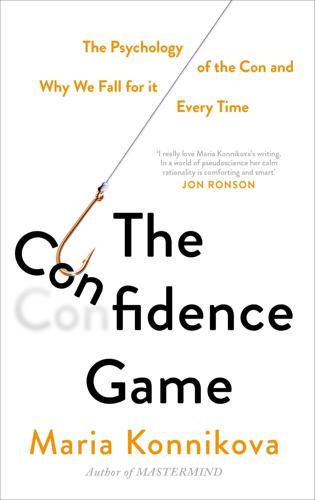
The Confidence Game: The Psychology of the Con and Why We Fall for It Every Time
by
Maria Konnikova
Published 28 Jan 2016
Some conform to expectations, others do not, and there may be significant divergence from the profile that emerges from one study to the next. One review of just under six hundred cases of company fraud in seventy-eight countries between 2011 and 2013 managed to capture some of the personality characteristics of the perpetrators—and not all of them, it turns out, fit the dark triad mold. Some did, it’s true—one fifth admitted to having committed fraud, they said, “Just because I can,” a pure dark triad response if ever there were one. Over 40 percent were motivated by greed—but even more, just under half, by a sense of superiority, the hallmark of narcissism. They were simply better, they felt, and so they deserved more. Many reported being motivated by a sense of anger, of being underpaid and undervalued.
…
Others described them as “lacking empathy, guilt, remorse, and fear, and . . . unconcerned with their behavioral transgressions.” Psychopathy, then, is a sort of biological predisposition that leads to many of the behaviors we expect from the confidence artist. But that’s not exactly the whole story. Psychopathy is part of the so-called dark triad of traits. And as it turns out, the other two, narcissism and Machiavellianism, also seem to describe many of the traits we associate with the grifter. Narcissism entails a sense of grandiosity, entitlement, self-enhancement, an overly inflated sense of worth, and manipulativeness. It sounds, in short, like someone much akin to our Fred Demara, someone who can’t stand to be seen as inferior, who needs to be the center of attention, and who will do what it takes to get there.
…
Those who scored higher in Machiavellianism were more likely to take the bait when the rationale made it more cost-effective to do so. Machiavellianism, it seems then, may, like psychopathy, predispose people toward con-like behaviors and make them better able to deliver on them. Delroy Paulhus, a psychologist at the University of British Columbia who specializes in the dark triad traits, goes as far as to suggest that “Machiavellian” is a better descriptor of the con artist than “psychopath.” “It seems clear that malevolent stockbrokers such as Bernie Madoff do not qualify as psychopaths,” he writes. “They are corporate Machiavellians who use deliberate, strategic procedures for exploiting others.”
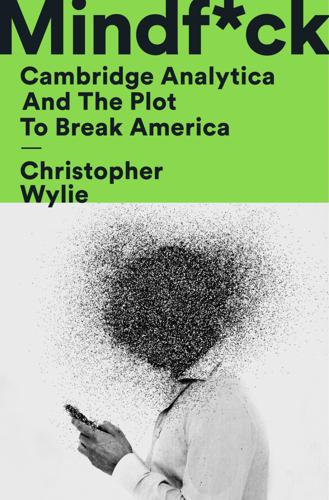
Mindf*ck: Cambridge Analytica and the Plot to Break America
by
Christopher Wylie
Published 8 Oct 2019
In contrast to the Big Five traits found in everyone to some degree as part of normal psychology—openness, conscientiousness, extroversion, agreeableness, and neuroticism—these “dark triad” traits are maladaptive, meaning that those who exhibit them are generally more prone to antisocial behavior, including criminal acts. From the data CA collected, the team was able to identify people who exhibited neuroticism and dark-triad traits, and those who were more prone to impulsive anger or conspiratorial thinking than average citizens. Cambridge Analytica would target them, introducing narratives via Facebook groups, ads, or articles that the firm knew from internal testing were likely to inflame the very narrow segments of people with these traits.
…
—VICTOR HUGO Contents Cover Title Page Copyright Epigraph Chapter 1: Genesis Chapter 2: Lessons in Failure Chapter 3: We Fight Terror in Prada Chapter 4: Steve from America Chapter 5: Cambridge Analytica Chapter 6: Trojan Horses Chapter 7: The Dark Triad Chapter 8: From Russia with Likes Chapter 9: Crimes Against Democracy Chapter 10: The Apprentice Chapter 11: Coming Out Chapter 12: Revelations Epilogue: On Regulation: A Note to Legislators Dedication Acknowledgments About the Author CHAPTER 1 GENESIS - With each step, my new shoes dig into my heels.
…
We had done it. We had reconstructed tens of millions of Americans in silico, with potentially hundreds of millions more to come. This was an epic moment. I was proud that we had created something so powerful. I felt sure it was something that people would be talking about for decades. CHAPTER 7 THE DARK TRIAD - By August 2014, just two months after we launched the app, Cambridge Analytica had collected the complete Facebook accounts of more than 87 million users, mostly from America. They soon exhausted the list of MTurk users and had to engage another company, Qualtrics, a survey platform based in Utah.

San Fransicko: Why Progressives Ruin Cities
by
Michael Shellenberger
Published 11 Oct 2021
Researchers find that people are increasingly “moral typecasting,” or creating highly polarized categories of “victim” and “perpetrator.”17 And they find that people who portray themselves as “victims” believe they will be better protected from accusations of wrongdoing.18 In one study, participants judged how responsible an imaginary car thief was for his actions. One group was told that he had a genetic oversensitivity to pain. The other group was not given that detail. The people in the group who were told that the man was oversensitive to pain held him less responsible for his action.19 Victim signaling is more common among those with the so-called Dark Triad personality traits of narcissism, Machiavellianism, and psychopathy. In one study, participants who strongly identified with statements of victimization like “I have fewer opportunities presented to me than other people” were more likely to lie about whether they correctly guessed a coin flip, a lie that they knew would reward them one dollar.
…
They were also more likely to agree with statements like “If I knew I could never get caught, I would be willing to steal a million dollars.”20 And, researchers find, groups using victim signaling are more likely to seek retribution in violent conflicts.21 Victim signalers are more likely to boast of their victim status after being accused of discriminating against others, or of being privileged.22 And so-called virtuous victims, people who broadcast their morality, alongside their victimization, are more likely to gain resources from others, researchers find, and display Dark Triad personality traits, than victim signalers who did not signal their virtue.23 Nobody in the gay community rejected victimology more than Harvey Milk. Before running for office he owned and managed a small camera shop in the Castro neighborhood. But his passion was community organizing and he became known as “the mayor of Castro Street.”
…
Philanthropists who have sought to win the altruism game have achieved many positive things, including higher agricultural yields, the elimination of disease, and rights for traditionally victimized minorities. And when they accomplish positive things they deserve recognition. The problem is when compassion acts as cover for darker motivations. Throughout history people who appear to have the Dark Triad personality traits of psychopathy, Machiavellianism, and narcissism, most famously Stalin and Mao, have successfully manipulated compassionate, idealistic people to support them, even after evidence of their barbarism came to light. What is notable is that they have often done so not by pretending to be altruistic but by being genuinely altruistic.
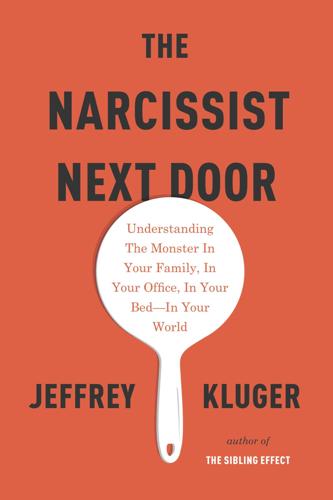
The Narcissist Next Door
by
Jeffrey Kluger
Published 25 Aug 2014
Multiple studies have shown the seductive power of what’s evocatively known as the Dark Triad of personality traits: narcissism, impulsive thrill-seeking and Machiavellianism—or exploitativeness. Men who score high in any of these traits—to say nothing of those who score high on all of them, which some do—also tend to exceed other men in number of sexual encounters in any given week, month or year. At a conference convened by the Human Behavior and Evolution Society in Japan in 2008, Peter Jonason of New Mexico State University, who conducted one of the studies, invoked James Bond as the perfect mash-up of all of the Dark Triad traits—and the successful sexuality that goes with it: “He’s clearly disagreeable, very extroverted and likes trying new things—including killing people and new women,” Jonason said.
…
See workplace narcissism CrassParenting.com, 25 credit grabbing bosses, 150–52 politicians, 151 in workplace, 85, 87, 91, 209 criminals brain function and lack of empathy, 226–30 Bundy, Ted, 235 capacity for empathy, 199, 228, 230 charisma, 219–21, 234–35 Dookhan, Annie, 253–54 Harris, Eric, 219–23, 231 Klebold, Dylan, 220–23, 231 Madoff, Bernie, 7, 31, 35 malignant narcissism, 231–35 mellowing with age, 230 among sports stars, 47–48, 117 See also despots and dictators Crocker, Jennifer, 118 Cruz, Ted, 5 Cutter, Jack, 7 Cyrus, Miley, 6 Dark Triad of personality traits, 107–8 Dattner, Ben, 148–49 Deluga, Ronald, 169–72 demeaning of others CORF (cutting off reflected failure), 208–9 power display, 144–46 professional recognition as zero-sum contest, 84–85, 144 treatment of out-groups, 195, 199–200, 203 denial of responsibility.
…
See romantic narcissism responsibility for mistakes. See blaming of others Rice, Mike, 144–46 Rogers, (Mister) Fred, 10 Rojstaczer, Stuart, 59 romantic narcissism avoidance of intimacy, 103, 113–15 charm and seductive power, 102–3, 105, 107–8, 137 cheating, 103, 109, 116–17 crossing of age boundaries, 105 Dark Triad of personality traits, 107–8 evolutionary value of, 100, 105–6, 108 in females, 104–5, 106–7 golden period of fidelity, 108–10 insecurity and fear of rejection, 109, 114–15 long-term relationships, 118–20 lying, 115–16 in old age, 120–21 physical abuse and controlling behavior, 117–18 presidential philandering, 70, 110–11, 156 qualities sought in mate, 112–13 reflected glory of glamorous partner, 110–12 sex despite aversion and inhibition, 99–102 Roosevelt, Eleanor, 63, 156 Roosevelt, Franklin, 140, 159, 167, 171, 173 Roosevelt, Teddy, 140, 160, 167, 172, 173 Roth, David Lee, 237 Roth, Richard, 158 Rubio, Marco, 41 Sabin, Albert, 17 Salk, Jonas, 17, 86–87 Schott, Marge, 126–27 Schulman, Michael, 198 self-esteem movement, 12, 55–59 selfies, 11, 66 sexting, 9, 64–67 Sheen, Charlie, 39–41 Sh*tty Mom (Kilmartin et al.), 24 Shula, Don, 134 signaling.
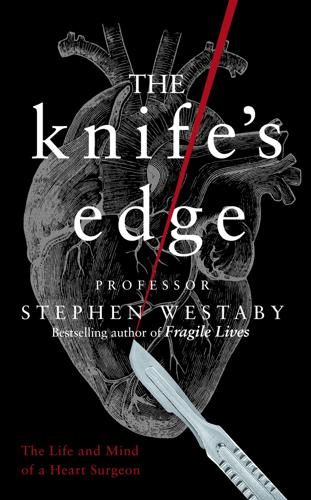
The Knife's Edge
by
Stephen Westaby
Published 14 May 2019
It meant that I couldn’t be given them a second time. Having said that, most successful surgeons have certain malign traits in common. These have been summarised in the medical literature as the ‘dark triad’ of psychopathy, Machiavellianism – the callous attitude in which the ends are held to justify the means – and narcissism, which manifests as the excessive self-absorption and sense of superiority that goes with egoism and an extreme need for attention from others. This dark triad emanates from placing personal goals and self-interest above the needs of other people. Just in the last few months psychologists at the University of Copenhagen have shown that if a person manifests just one of these dark personality traits, they probably have them all simmering below the surface, including so-called moral disengagement and entitlement, which enables someone to throw surgical instruments with absolutely no conscience at all.
…
Just in the last few months psychologists at the University of Copenhagen have shown that if a person manifests just one of these dark personality traits, they probably have them all simmering below the surface, including so-called moral disengagement and entitlement, which enables someone to throw surgical instruments with absolutely no conscience at all. This detailed mapping of the dark triad is comparable to Charles Spearman’s demonstration a hundred years ago that people who score highly in one type of intelligence test are likely to perform equally well in other kinds. Perhaps the daunting road to a surgical career inadvertently selects characters with these negative traits. It certainly appears that way, yet I had a very different side to my personality when it came to my own family.
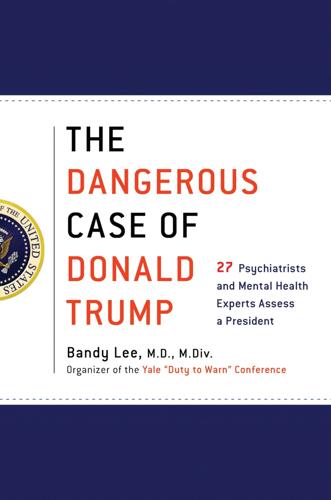
The Dangerous Case of Donald Trump: 27 Psychiatrists and Mental Health Experts Assess a President
by
Bandy X. Lee
Published 2 Oct 2017
Hill, Robert W., and Gregory P. Yousey. 1998. “Adaptive and Maladaptive Narcissism Among University Faculty, Clergy, Politicians, and Librarians.” Current Psychology 17 (2–3): 163–69. Isaacson, Walter. 2011. Steve Jobs. New York: Simon and Schuster. Jakobwitz, Sharon, and Vincent Egan. 2006. “The Dark Triad and Normal Personality Traits.” Personality and Individual Differences 40 (2): 331–39. Lapsley, D. K., and M. C. Aalsma. 2006. “An Empirical Typology of Narcissism and Mental Health in Late Adolescence.” Journal of Adolescence 29 (1): 53–71. Malkin, Craig. 2015. Rethinking Narcissism: The Bad—and Surprising Good—About Feeling Special.
…
Rethinking Narcissism: The Bad—and Surprising Good—About Feeling Special. New York: HarperCollins. Malkin, Craig, and Stuart Quirk. 2016. “Evidence for the Reliablity and Construct Validity of the Narcissism Spectrum Scale.” Research in progress. Pailing, Andrea, Julian Boon, and Vincent Egan. 2014. “Personality, the Dark Triad and Violence.” Personality and Individual Differences 67: 81–86. Penney, Lisa M., and Paul E. Spector. 2002. “Narcissism and Counterproductive Work Behavior: Do Bigger Egos Mean Bigger Problems?” International Journal of Selection and Assessment 10 (1–2): 126–34. Raskin, Robert N., and Calvin S.
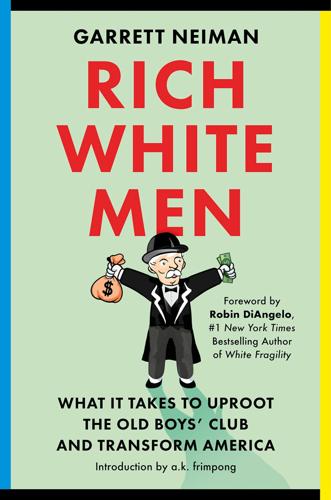
Rich White Men: What It Takes to Uproot the Old Boys' Club and Transform America
by
Garrett Neiman
Published 19 Jun 2023
Excessively high testosterone levels bring other problems, too—such as aggressiveness, irritability, acne, oily skin, and sleep apnea; it also reduces sperm counts, shrinks testicles, diminishes fertility, and raises bad cholesterol to unhealthy levels, putting men with high testosterone at greater risk for heart attacks, cardiovascular disease, and strokes.11 A particularly significant risk of prioritizing overconfident leaders is that it often elevates those who have malevolent personalities. On average, men score higher than women on the “dark triad” personality traits: narcissism, Machiavellianism, and psychopathy.12 While leaders with these traits sometimes seem charismatic and perform well in interviews and early on in their tenures, they often cause damage in the long run. After such leaders climb the ladder, they are more prone to counterproductive and antisocial work behaviors, including bullying, fraud, white-collar crime, harassment, and sexual harassment, all of which produce toxic cultures in their teams.
…
Leslie Picker, “Alpha Males Hurt Alpha: Hedge Fund Managers with High Testosterone Underperform,” CNBC, April 19, 2018, https://www.cnbc.com/2018/04/19/alpha-males-hurt-alpha-hedge-fund-managers-with-high-testosterone-underperform.html. 11. “Unhealthy Testosterone Levels in Men: Causes and Symptoms,” Everlywell, accessed September 19, 2022, https://www.everlywell.com/blog/testosterone/unhealthy-testosterone-levels-men/. 12. Gregory Louis Carter, Anne C. Campbell, and Steven Muncer, “The Dark Triad Personality: Attractiveness to Women,” Personality and Individual Differences 56 (January 2014): 57–61, https://doi.org/10.1016/j.paid.2013.08.021. 13. “The US Gun Homicide Rate Is 26 Times That of Other High-Income Countries,” Everytown Research & Policy, Everytown for Gun Safety Support Fund, January 26, 2022, https://everytownresearch.org/graph/the-u-s-gun-homicide-rate-is-25-times-that-of-other-high-income-countries/; “Murder in the U.S.: Number of Offenders by Gender 2020,” Statista, October 7, 2021, https://www.statista.com/statistics/251886/murder-offenders-in-the-us-by-gender/. 14.
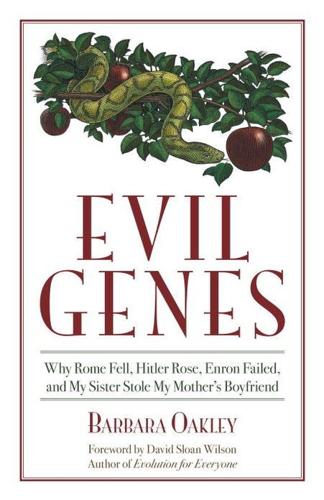
Evil Genes: Why Rome Fell, Hitler Rose, Enron Failed, and My Sister Stole My Mother's Boyfriend
by
Barbara Oakley Phd
Published 20 Oct 2008
Li, Private Life, pp. 115, 124. 86. Spence, Mao Zedong, p. 101. 87. Roderick MacFarquhar and Michael Schoenhals, Mao's Last Revolution (Cambridge, MA: Harvard University Press, 2006), p. 262. 88. Short, Mao, p. 550. 89. Chang and Halliday, Mao, p. 13. 90. See also Delroy L. Paulhus and Kevin M. Williams, “The Dark Triad of Personality: Narcissism, Machiavellianism, and Psychopathy,” Journal of Research in Personality 36, no. 6 (2002): 556–63. 91. W. John Livesley et al., “Genetic and Environmental Contributions of Dimensions of Personality Disorder,” American Journal of Psychiatry 150, no. 12 (1993): 1826–31. 92.
…
There is also the much more comprehensive recent treatment of antisocial and moral behavior from both a neurological and evolutionary perspective: Raine and Yang, “Neural Foundations.” 3. Michelle Caruso, “Laci's Ex-Beau Shot His Girl Friend,” National Enquirer, July 8, 2003. 4. Paulhus and Williams, “Dark Triad of Personality.” 5. Hariri et al., “A Susceptibility Gene.” 6. L. Mealey, “Primary Sociopathy (Psychopathy Is a Type, Secondary Is Not),” Behavioral and Brain Sciences 18, no. 3 (1995): 579–87. 7. Renshon, Presidential Candidates, p. 69. 8. Steven D. Levitt and Stephen J. Dubner, Freakonomics: A Rogue Economist Explores the Hidden Side of Everything (New York: HarperCollins, 2005), pp. 39–45. 9.
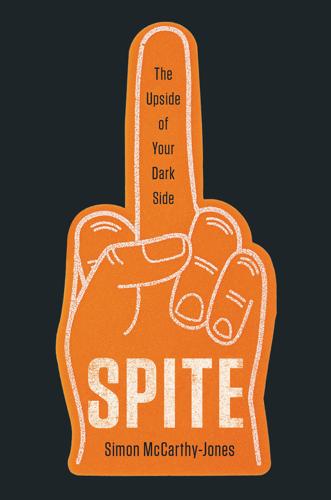
Spite: The Upside of Your Dark Side
by
Simon McCarthy-Jones
Published 12 Apr 2021
Preliminary research has found that, on average, men are more spiteful than women, and the young are more spiteful than the old. Those who are spiteful are more likely to be aggressive, callous, manipulative, and exploitative. They are also more likely to be lower in empathy, self-esteem, conscientiousness, and agreeableness.61 Spite is associated with the possession of the dark triad of personality traits: psychopathy, narcissism, and Machiavellianism. These traits are limbs of a larger tree called the “dark factor of personality,” or D-factor for short.62 It is the tendency to grab what you value (e.g., pleasure, power, money, and status) while disregarding, accepting, or even enjoying any harm your behavior may cause others.

Uncanny Valley: A Memoir
by
Anna Wiener
Published 14 Jan 2020
It also had a historically corrupt government, and a housing market built atop racist urban-renewal policies—real estate values had benefited as much from redlining as from discriminatory zoning practices and midcentury internment camps—but these narratives, along with the reality that an entire generation had been prematurely lost to AIDS, undercut its reputation as a mecca for the free and freakish, people on the fringe. The city, trapped in nostalgia for its own mythology, stuck in a hallucination of a halcyon past, had not quite caught up to the newfound momentum of tech’s dark triad: capital, power, and a bland, overcorrected, heterosexual masculinity. It was a strange place for young and moneyed futurists. In the absence of vibrant cultural institutions, the pleasure center of the industry might have just been exercise: people courted the sublime on trail runs and day hikes, glamped in Marin and rented chalets in Tahoe.
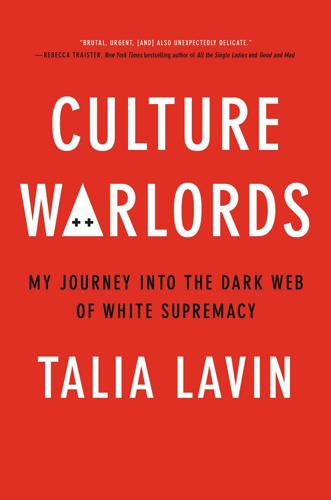
Culture Warlords: My Journey Into the Dark Web of White Supremacy
by
Talia Lavin
Published 14 Jul 2020
At one point, Alex Jones spoke with a granddaughter of a Weather Underground member, reaching back generations to find a suitable example of far-left violence. By October 2017, Jones was claiming, on air, to an audience of millions, that “members of Antifa are illegally crossing the Syrian border to receive military training from Kurdish militias as part of a dark triad between Antifa, anarcho-communist Kurds, and Kurdish members of ISIS.” (Needless to say, there was no evidence to support this claim.) Then—as is the case whenever conspiracies build up too much steam—things got even weirder. A popular anonymous Twitter user who goes by the pseudonym “Krang T.
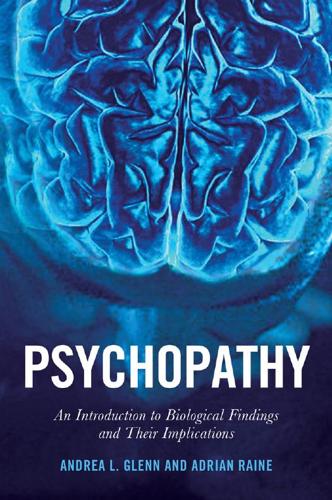
Psychopathy: An Introduction to Biological Findings and Their Implications
by
Andrea L. Glenn
and
Adrian Raine
Published 7 Mar 2014
Decavalas, and N. G. Beratis. 2009. “Effect of maternal smoking on cord blood estriol, placental lactogen, chorionic gonadotropin, FSH, LH, and cortisol.” Journal of Perinatal Medicine 37 (4):364–69. Vernon, P. A., V. C. Villani, L. C. Vickers, and J. A. Harris. 2008. “A behavioral genetic investigation of the Dark Triad and the Big 5.” Personality and Individual Differences 44:445–52. Verona, E., C. J. Patrick, J. J. Curtin, M. M. Bradley, and P. J. Lang. 2004. “Psychopathy and physiological response to emotionally evocative sounds.” Journal of Abnormal Psychology 113:99–108. Viding, E., R. J. Blair, T. E. Moffitt, and R.
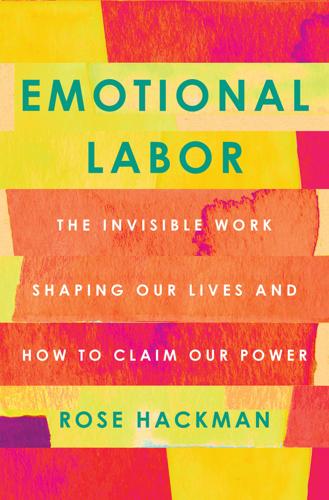
Emotional Labor: The Invisible Work Shaping Our Lives and How to Claim Our Power
by
Rose Hackman
Published 27 Mar 2023
(and How to Fix It) (Boston: Harvard Business Review Press, 2019). 20. Dimitri van der Linden et al., “Overlap Between the General Factor of Personality and Emotional Intelligence: A Meta-Analysis,” Psychological Bulletin 143, no. 1 (2017): 36–52, https://doi.org/10.1037/bul0000078. 21. Peter K. Jonason and Jeremy Tost, “I Just Cannot Control Myself: The Dark Triad and Self-Control,” Personality and Individual Differences 49, no. 6 (October 2010): 611–15, accessed May 12, 2021, https://www.sciencedirect.com/science/article/abs/pii/S0191886910002783. 22. Jill Byron, “Brand Authenticity: Is It for Real?,” AdAge, March 23, 2016, https://adage.com/article/digitalnext/brand-authenticity-real/303191. 23.
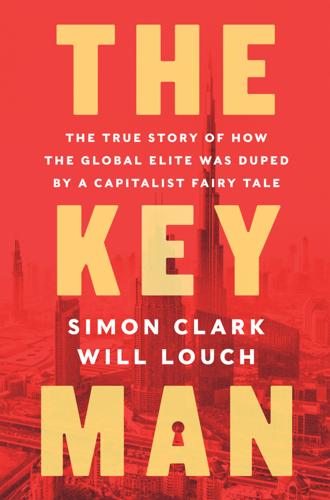
The Key Man: The True Story of How the Global Elite Was Duped by a Capitalist Fairy Tale
by
Simon Clark
and
Will Louch
Published 14 Jul 2021
He was by turns charismatic, frightening, inspiring, jealous, and manipulative. Enthralled employees listened to him talk for hours about their grand purpose in the global economy. A dozen employees described Arif as having narcissistic personality disorder. Some thought Arif displayed the traits of the dark triad—a combination of narcissism, psychopathy, and Machiavellianism. He crushed the confidence of employees by bullying them, built them up again with praise, and then broke them down again with fresh insults. A military officer who had won medals for bravery in battle was so inspired and charmed by Arif during a job interview that he joined Abraaj to work closely with him.
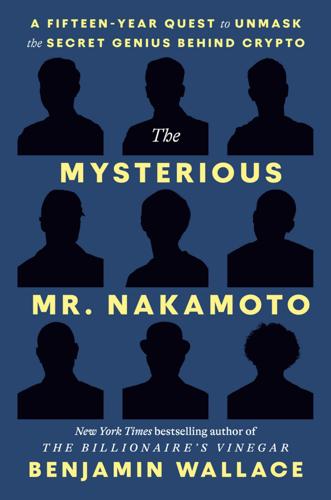
The Mysterious Mr. Nakamoto: A Fifteen-Year Quest to Unmask the Secret Genius Behind Crypto
by
Benjamin Wallace
Published 18 Mar 2025
My philosophy dissertation on the philosophy of time has just been granted. It’s from Birkbeck.” He was also currently working on a PhD in forensic psychology and a master’s in therapeutic psychology, he said. He was writing a paper about “some of the types of people who run Ponzis…usually in the Dark Triad-type areas,” and another about “social media and the formation of tribal groups.” A man derided as #faketoshi, who was a Twitter warrior, was studying fraud and internet polarization? Craig raised his eyebrows and smiled. “Yes, that’s part of why I did it. My way of understanding is generally doing formal classes.”
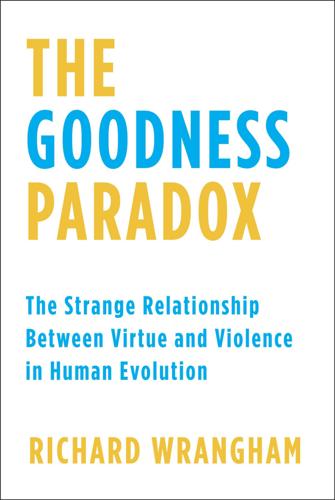
The Goodness Paradox: The Strange Relationship Between Virtue and Violence in Human Evolution
by
Richard Wrangham
Published 29 Jan 2019
Zollikofer. 2017. “Neomorphosis and heterochrony of skull shape in dog domestication.” Scientific Reports 7: 13443. Gellner, Ernest. 1994. Conditions of Liberty: Civil Society and Its Rivals. London: Hamish Hamilton. Giammarco, Erica A., and Philip A. Vernon. 2015. “Interpersonal guilt and the Dark Triad.” Personality and Individual Differences 81: 96–101. Gilby, Ian C., Michael L. Wilson, and Anne E. Pusey. 2013. “Ecology rather than psychology explains co-occurrence of predation and border patrols in male chimpanzees.” Animal Behaviour 86: 61–74. Gintis, Herbert, Carel van Schaik, and Christopher Boehm. 2015.

Sandy Hook: An American Tragedy and the Battle for Truth
by
Elizabeth Williamson
Published 8 Mar 2022
Even QAnon, typically described as a mass delusion afflicting the far right, transcends politics, Uscinski told me. “In our models, partisanship and ideology drop out as predictive of QAnon beliefs,” he said. “So what we’re left with are dark personality traits.” These traits are led by what psychologists call the “Dark Triad”: narcissism, psychopathy, and Machiavellianism, meaning the willingness to manipulate others to gain a certain result. Those three, along with others like dogmatism and poor conflict management skills—screaming, throwing things, even slapping or punching in an argument—distinguish people likely to spread antisocial conspiracy theories.